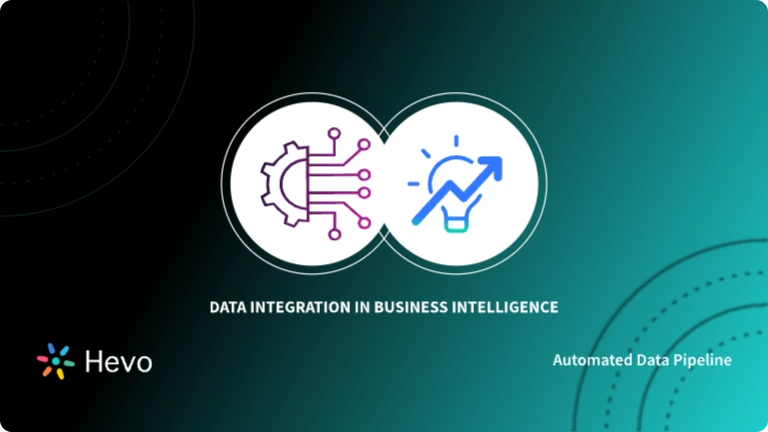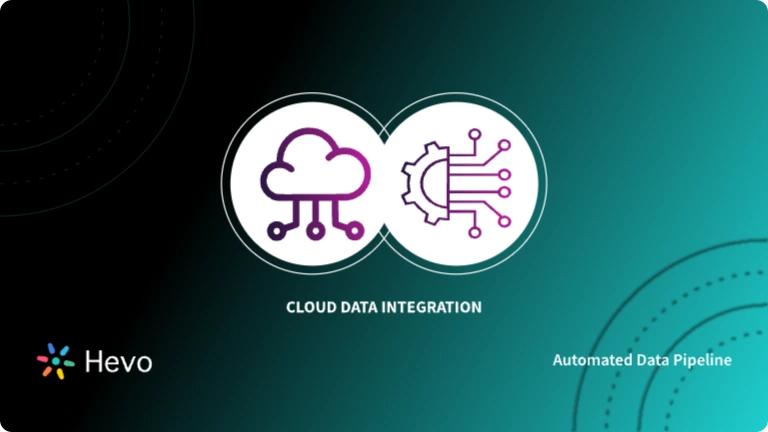When you need to pull, transform, and load large volumes of data from multiple sources into a central repository, setting up a data integration process is essential. Modern businesses require a solution that can manage fluctuating workloads, scale as needed, and offer an easy-to-use interface.
To ensure your data integration process works efficiently, it’s important to follow data integration best practices, whether you’re building a custom solution or choosing a pre-built one. No worries, this comprehensive list covers common mistakes to avoid and best practices to implement for a smooth data integration experience.
Table of Contents
What Are the Benefits of Having a High-Quality Data Integration System?
The following are the data integration benefits of having a high-quality data integration system.
- Enhanced Data Accessibility: A data integration system can make it easier for users to access and use data from different sources, improving the accessibility of the data. By providing a single, unified view of data from multiple sources, a data integration system can help improve decision-making by giving users a more complete and accurate picture of their business.
- Saves Time: Manually integrating and cleaning data requires several hours. Also, manually loading massive volumes of data from several sources is a time-consuming process, thereby causing delays in decision-making. Automated tools and solutions can swiftly handle large amounts of data and can provide near-real-time data integration with minimal downtime in case of a pipeline issue.
- Maintains Data Quality: Without manual intervention, the chances of error are reduced significantly. Pre-defined data quality approaches ensure data coming in multiple formats is consistently integrated together and replicated without any data leakage.
- Scalability: A well-thought data integration could cater to all your varying workloads and scale when the data sources and amount of data increase.
Struggling with messy pipelines, mismatched schemas, or integration bottlenecks? Hevo simplifies data integration, ensuring seamless, reliable workflows for your business. Hevo offers:
- 150+ pre-built connectors to ingest data from various databases and SaaS applications into data warehouses and databases.
- Both pre-load and post-load transformation capabilities with an easy-to-use Python-based drag-and-drop interface.
- Automatic schema mapping that seamlessly maps schemas from source to destination.
- A fault-tolerant architecture that ensures no data loss and keeps your data secure.
Thousands of customers around the world trust Hevo for their data ingestion needs. Join them and experience seamless data integration.
Get Started with Hevo for FreeTop 10 Data Integration Best Practices
1. Set Clear Business Goals
Before starting any data integration project, define clear business objectives. Understand why integration is needed—whether for real-time analytics, compliance, or operational efficiency. Setting specific goals ensures alignment with business needs and helps measure success. Without clear goals, integration efforts can become disorganized and fail to deliver meaningful insights.
2. Understand Data Sources
A thorough understanding of data sources is essential for smooth integration. Identify where data comes from, its format, and any inconsistencies. Assess structured and unstructured data sources, ensuring compatibility. Knowing your data sources helps prevent integration errors, improves data accuracy, and makes transformation easier.
3. Choose the Right Integration Methods and Tools
Selecting the right integration approach—ETL, ELT, API-based, or real-time streaming—depends on your use case. The right tools can automate workflows, reduce manual effort, and ensure scalability. Cloud data integration platforms simplify connectivity between applications, making data flow seamless and efficient.
4. Maintain Data Quality
Poor-quality data leads to inaccurate insights. Standardize, cleanse, and validate data before integration. Implement automated data cleaning techniques to remove duplicates, fix missing values, and ensure consistency. High-quality data improves decision-making and enhances trust in integrated systems.
5. Implement Strict Data Governance
Define policies for data access, security, and compliance. Implement role-based access control (RBAC) to prevent unauthorized changes. Proper governance ensures data integrity and regulatory compliance, reducing risks associated with data breaches and inconsistencies.
6. Focus on Data Security
Data integration involves moving sensitive information between systems. Use encryption, access control, and secure authentication to protect data in transit and at rest. Following security best practices prevents unauthorized access, data leaks, and compliance violations, which is key in customer data integration.
7. Monitor Data Integration Process
Regularly track the integration process to identify errors, bottlenecks, and performance issues. Implement real-time monitoring and alerts to detect failures early. Continuous monitoring helps maintain data accuracy and system reliability, which is a must for big data integration projects.
8. Test Thoroughly
Comprehensive testing ensures data is integrated correctly without errors. Perform unit testing, system testing, and user acceptance testing (UAT) to validate data flow. Testing prevents issues such as missing data, transformation errors, and integration failures before deployment.
9. Leverage Automation
Automating repetitive tasks, such as data extraction, transformation, and loading, reduces manual intervention and errors. Automation improves efficiency, accelerates integration, and ensures consistency in data workflows. It also helps when managing different types of data integration across tools and platforms.
10. Create a Scalable Solution
As businesses grow, data integration needs will evolve. Design a flexible and scalable data integration architecture that can handle increasing data volumes and new sources. Cloud-based integration solutions allow seamless scaling without significant infrastructure changes.
These best practices help businesses achieve efficient, secure, and high-quality data integration while ensuring long-term sustainability.
Most Common Mistakes in Data Integration
- Forgetting the Business User: Non-technical users need a simple, user-friendly interface to set up and manage integrations. Focus on solutions that require minimal technical knowledge.
- Not Enough Research on the Build vs. Buy Approach: Building custom pipelines can be time-consuming for small-scale needs. For large-scale, frequent updates, automated no-code tools like Hevo can save time and resources.
- Overlooking Core Business Needs: Ensure the solution covers key needs like connecting all data sources, security, and the ability to perform necessary transformations and load data at the required frequency.
- Only Focusing on Short-Term Benefits: Choose a solution that can scale with your business growth, handling increased data sources and fluctuating workloads without losing performance.
Explore our latest blog on AI in Data Integration.
Final Thoughts
In short, data integration is the process of combining data from different sources to create a unified, consistent view, helping businesses make informed decisions and drive growth. By following best practices like setting clear goals, maintaining data quality, and leveraging automation, organizations can ensure smooth data flows and prevent errors.
It’s not about finding the “best” solution—each practice serves a unique purpose in optimizing your data integration process. While tools like Hevo simplify integration with no-code pipelines, success lies in having a strategy that aligns with your business needs. A well-executed approach ensures reliable data management and helps your business scale effectively.
Sign up for Hevo’s 14-day free trial and experience seamless data integration.
1. What are the three major types of integration strategies?
The four steps of data integration are:
– Data Extraction: Collecting data from various sources.
– Data Transformation: Cleaning, converting, and structuring data.
– Data Loading: Moving the transformed data into a destination system.
– Data Presentation: Delivering the integrated data for analysis or reporting.
2. Why is data integration difficult?
Data integration is challenging because it involves combining data from different sources, often with varying formats, structures, and quality. Ensuring data consistency, accuracy, and timely updates across systems requires careful planning and execution.
3. What are the three major types of integration strategies?
The three major types of data integration strategies are:
– Batch Integration: Data is collected and processed in batches at scheduled intervals.
– Real-Time Integration: Data is integrated instantly as it’s generated or updated.
– Hybrid Integration: A combination of both batch and real-time integration methods.






